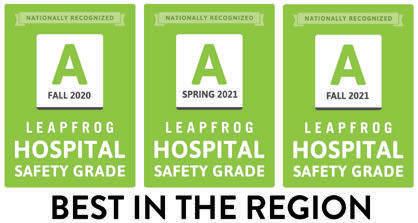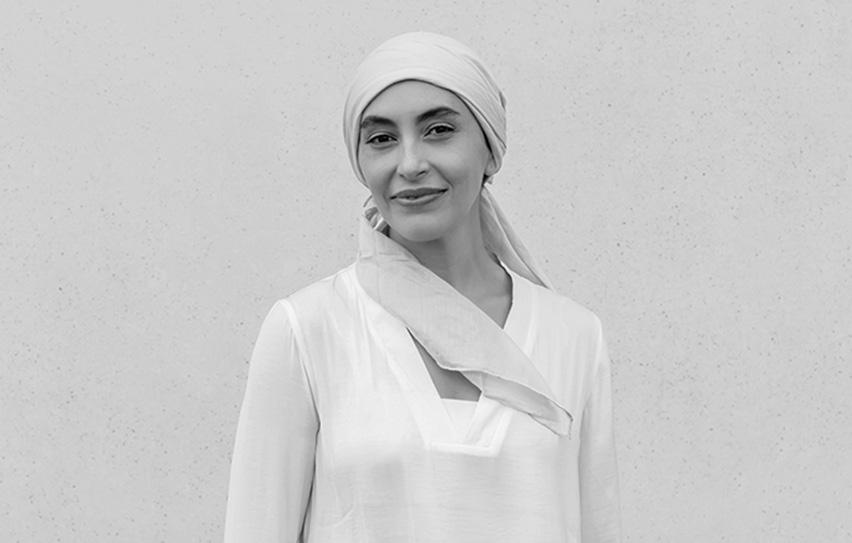Join

fight
Potential warning


Breast cancer is the most commonly occurring cancer in women across the globe.
to the World Cancer Research
there more than 2.26 million new cases of breast cancer in women
Such figures are sobering, but it’s important to recognize that breast cancer survival rates have improved dramatically in recent decades, providing hope to the millions of women who may be diagnosed with the disease in the years to come.
Various factors have helped to improve breast cancer survival rates, and education about the disease is certainly among them. Women are their own greatest allies against breast cancer, and learning to spot its signs and symptoms is a great first step in the fight against this potentially deadly, yet treatable disease.
Knowing your body

The American Cancer Society urges women to take note of how their breasts normally look and feel. That knowledge is vital because it helps women recognize when something does not look or feel good to the touch with their breasts. Screening alone may not be sufficient, as the ACS notes that mammograms do not find every breast cancer.




Signs and symptoms
When women are well acquainted with how their breasts look and feel, they’re in better position to recognize any abnormalities, which may or may not be indicative of breast cancer. The ACS reports that the following are some potential warning signs of breast cancer.
for breast cancer
A new lump or mass

The ACS indicates that this is the most common symptom of breast cancer. A lump or mass that is cancerous is often painless, but hard and has irregular edges. However, lumps caused by breast cancer also can be soft, round and tender. Some even cause pain. They include:
• Swelling – Some women experience swelling of all or part of a breast even if they don’t detect a lump.
• Dimpling – The skin on the breast may dimple. When this occurs, the skin on the breast sometimes mimics the look of an orange peel.
• Pain – Pain on the breast or nipple could indicate breast cancer.
• Retraction – Some women with breast cancer experience retraction, which occurs when the nipple turns inward.


• Skin abnormalities – Breast cancer may cause the skin on the breast to redden, dry out, flake, or thicken; and
• Swollen lymph nodes – Some women with breast cancer experience swelling of the lymph nodes under the arm or near the collarbone.
The presence of any of these symptoms merits a trip to the doctor. Women with these symptoms should not immediately assume they have breast cancer, as the ACS notes that various symptoms of breast cancer also are indicative of non-cancerous conditions that affect the breasts.
Only a physician can diagnose breast cancer, which underscores the importance of reporting symptoms to a doctor immediately.
A few ways to reduce cancer risk every day
The human toll cancer takes is significant, both on the lives it claims and on the friends and family of those victims. Estimates from the International Agency for Research on Cancer indicated 10 million individuals across the globe lost their lives to cancer (excluding nonmelanoma skin cancer) in 2020. New research indicates those numbers could be on the rise.
A study published in the journal The Lancet in 2020 found that deaths from cancer are now more common in some high- and middle-income countries than deaths from cardiovascular disease.
Authors of the study, which examined incidences of cancer among adults between the ages of 35 and 70 in 21 countries across five continents, concluded that cancer is like to become the leading cause of death in middle-age.
Though cancer is a formidable disease, many cases of cancer are preventable. In fact, the things people do every day can go a long way toward lowering their cancer risk by a significant margin. Certain behaviors, like avoiding smoking, are widely known to reduce cancer risk. But some lesser known actions also can help individuals lower their risk.
Quit at the click
The Air Pollution Control District of Santa Barbara County in California notes that gasoline vapors include a variety
of toxic substances, including benzene. Benzene is an air pollutant that adversely affects the central nervous system, the respiratory tract and the immune system.
Modern automobiles now click when the gas tank is full and it’s vital that drivers avoid adding any more gas after they hear that click. Drivers may be accustomed to topping off after the click, but doing so can affect the vapor recovery system in a car. That system is designed to keep toxic chemicals like benzene out of the air. Topping off can needlessly expose drivers and their passengers to benzene, which the U.S. Department of Health and Human Services considers a carcinogen, or cancercausing chemical.
Grill wisely
Millions of people anxiously await the return of warm weather so they can once again fire up their backyard grills. Various studies have suggested there’s a link between well-done grilled meat and cancer.
One study conducted by researchers at Vanderbilt University found that high intake of well-done meat increases exposure to heterocyclic amines, a type of carcinogen that forms in cooked red meat. That doesn’t mean individuals should put away their grills, but a change in grilling habits could help lower cancer risk.
For example, one study from researchers at Kansas State University found that adding antioxidant-rich spices
such as rosemary and thyme to marinade and soaking meat for at least an hour before cooking can reduce HCAs by as much as 87%.
Drink more fluids
Drinking more fluids is one of the easier things people can do every day to reduce their cancer risk. The American Cancer Society recommends individuals consume eight cups of water per day, but millions likely fall far short of that amount.
That’s unfortunate, as research presented at the American Association for Cancer Research International Conference on Frontiers in Cancer Prevention Research in 2011 found that high fluid intake was associated with a 24% reduced bladder cancer risk among men.
In addition, a separate study funded by the Strauss Institute and published in 2020 in the International Journal of Environmental Research and Public Health found that women with breast cancer consumed less water and total fluids than women who did not have breast cancer.

The researchers concluded more investigation into the link between drinking more water and reducing breast cancer risk is necessary, but noted that drinking water is harmless, convenient and beneficial to many aspects of health.
Did you know?
According to the American Cancer Society, breast cancer mainly occurs in middle-aged or older women. In fact, the median age at the time of a breast cancer diagnosis is 62.
Though it’s possible for women far younger than 62 to be diagnosed with breast cancer, the ACS reports that only a very small number of women younger than 45 are diagnosed with the disease each year.
Despite the average age of onset being older than 60, breast cancer is highly treatable. The World Health Organization notes that breast cancer treatments routinely achieve survival probabilities of 90 percent or higher. However, those probabilities decline considerably in lower-income countries where access to screening and other medical services is limited.
For example, the WHO notes that five-year survival rates for breast cancer routinely surpass 90% in high-income countries like the United States and Canada.
However, those rates are as low as 40% in South Africa, where early detection of the disease is less likely than it is in wealthier nations. That disparity in survival rates underscores the need for greater resource allocation in lower-income countries, but also highlights the effectiveness of screening and other measures in high-income countries where women are taught to report any abnormalities with their breasts.
(METRO CREATIVE)Think Pink!
BREAST CANCER
publication of Rock Valley Publishing LLC
Ann St., Delavan, WI 53115
728-3411
EDITOR: Tracy Ouellette
Jennifer
Heather
Vicki
above: Though cancer could soon become the leading cause of death in various parts of the globe, many of those deaths can be prevented. And even the simplest measures can make a difference
cancer risk.
Taking care of the whole patient

The stress of a cancer diagnosis can be overwhelming for patients, families and caregivers. And while each person’s response to hearing the words “you have cancer” may differ, feelings of stress, fear and unease are common. According to a study in the Journal of Clinical Oncology, one in three people with cancer experience mental or emotional distress, and these challenges appear most (42%) among women with breast cancer.
Mental health can often take a back seat when a person is prioritizing their physical health, but managing mental health is essential and may even have an impact on living with metastatic breast cancer. Studies have shown that a decrease in symptoms of depression was associated with longer life in patients with metastatic breast cancer.
For Linda Carey, who has been living with MBC since 2006, having a community around her has been key to her well-being.
“Your community and loved ones can be valuable sources of support and light in your metastatic breast cancer experience,” Carey said.
Emotional health is important at every stage of a cancer diagnosis and treatment journey, and each person’s coping strategy is unique to them.

“It is important to remember that most people experience some kind of impact on their mental health with a cancer diagnosis. It can be sadness, helplessness or another stronger feeling. We want anyone experiencing concerns about their mental health to know there are resources available at LBBC.org and elsewhere to help,” said Jean Sachs, MSS, MLSP, CEO at Living
Caregiving for

What to know about prophylactic mastectomy
Breast cancer is the most common cancer diagnosed in American women, and is the leading cause of cancer death in less developed countries, says the Breast Cancer Research Foundation. According to Susan G. Komen, more than 680,000 breast cancer deaths occurred worldwide in 2020.
Breast cancer affects the anatomy of the breasts and can often spread to the lymph nodes. While breast cancer can affect just about any woman (as well as men), certain women are at higher risk for developing breast cancer than others.

Such women include those with a family history of breast cancer and/or the presence of genetic markers called BRCA1 or BRCA2 gene mutations, according to the Bedford Breast Institute. Those women have a lifetime risk of up to 87% for getting breast cancer and 53% for developing ovarian cancer. Other risk factors include the presence of dense breast tissue, exposure to radiation at an early age and having already had cancer in one breast.
What is prophylactic mastectomy?
In instances when breast cancer risk is particularly high, women may opt to undergo prophylactic mastectomy, also called preventative mastectomy. This is the surgical removal of one or both breasts with the intent
Breast cancer risk is higher
to dramatically reduce the risk of developing breast cancer.
Rate of risk reduction
The Mayo Clinic says prophylactic mastectomy reduces the risk of developing breast cancer by 90% to 95% among women with BRCA gene mutations. It is roughly the same risk reduction for women who already have had breast cancer or have a strong family history of the disease and then have a breast removed.
Studies indicate that preventative mastectomy of the unaffected breast (called contralateral prophylactic mastectomy) in cases when breast cancer occurred in the other breast, when no genetic mutations or hereditary risk factors are present, has little to no effect on overall survival rate. This is a surgery only for those with very high risk.
Why isn’t risk reduced completely?
Not all breast tissue can be removed during a prophylactic mastectomy. That is because breast tissue can sometimes be found in the chest, armpit, skin, above the collarbone, or on the upper part of the abdominal wall, states the Mayo Clinic. It is impossible to remove all breast tissue cells during surgery. Although risk reduction is
significant after mastectomy, that risk cannot be eliminated entirely.
Risks associated with prophylactic mastectomy
There are some risks associated with prophylactic mastectomy, both during the procedure and afterwards. BreastCancer.org says bleeding or infection, fluid collecting under the scar, delayed wound healing, scar tissue formation, loss of sensation in the chest, and complications while being put under anesthesia are all possible. Women are urged to carefully consider the pros and cons before opting for the surgery.
Alternatives
Prophylactic mastectomy is only one option for women at high risk for developing breast cancer. Some alternatives include:
• Ultrasounds, physical exams, and mammograms every three to six months for the rest of the patient’s life;
• Medication that can reduce risk of developing breast cancer;
• MRIs in addition to mammograms; and
• Surgery to remove the ovaries, which can decrease both the risk of breast and ovarian cancers. It may reduce breast cancer risk by up to 50% if performed before age 50.
Treatment options for breast cancer patients
Millions of women worldwide are diagnosed with breast cancer each year. Such a diagnosis is never welcome, but women should know that survival rates have improved dramatically in recent decades. In fact, the World Health Organization reports that, by the end of 2020, nearly eight million women were living despite having been diagnosed with breast cancer at some point in the previous half decade.
One of the reasons for the improved survival rates is the efficacy of various treatments. The National Breast Cancer Foundation, Inc. notes that doctors have various options to treat breast cancer, and they often devise treatment plans that include some combination of treatments.
Though no one wants to imagine receiving a breast cancer diagnosis, understanding the potential treatments for the disease can help women and their families be more prepared should that day ever arrive. The following are three treatment options physicians may discuss with women as they begin devising ways to overcome the disease.
Chemotherapy
Chemotherapy is used to treat various cancers, including breast cancer. Chemotherapy employs various drugs to destroy cancer cells or slow their growth.
The drugs administered during chemotherapy are known as cytotoxic drugs and may be administered orally or intravenously. The NBCF notes that chemotherapy is offered to most patients, though doctors will consider a host of variables before deciding if chemotherapy is right for a given patient. Those variables include the type of tumor, its grade and its size.
Radiation therapy
During radiation treatments, highenergy rays are used to kill cancer cells. Only cells in the part of the body that is being treated with radiation are affected, so patients needn’t worry that other parts of their body will be hit with radiation.
The NBCF reports that patients diagnosed with Stage 0 and most diagnosed with Stage 1 invasive cancer or higher can expect doctors to prescribe radiation therapy. Women who have had a lumpectomy also are likely to be

prescribed radiation. Two main kinds of radiation are generally considered for breast cancer patients. External beam breast cancer radiation treatment delivers cancer-killing rays through a large machine. Internal breast cancer radiation is a newer treatment that injects radioactive cancer-killing treatments into the affected area.
Targeted therapy
The NBCF reports that targeted
therapy is commonly used in combination with traditional chemotherapy. Targeted therapy attacks specific breast cancer cells without harming normal cells, which is why it tends to produce less severe side effects than chemotherapy treatments.

Targeted therapy employs drugs to block the growth of cancer cells in very specific ways. One example cited by the NBCF is the drug Trastuzumab, or Herceptin®, which is given to women
whose breast tumors have too much of the abnormal protein HER2. Though the side effects of targeted therapies tend to be less severe, women may still experience issues like fever and chills, nausea, headaches, and other symptoms after drugs have been administered.
Women diagnosed with breast cancer are urged to play an active role in their treatments and ask any questions they might have before, during and after being treated.
Beyond Breast Cancer, a national nonprofit organization that seeks to create a world that understands there is more than one way to have breast cancer.
There are a number of ways to manage the emotional impact of a cancer diagnosis. Talking with someone about it, whether it’s your healthcare team or a loved one, can be a first step. Here are a few tips:
• Capture your experiences and feelings. Keep a journal to write down emotions and organize thoughts, record feelings in a video, or through music, photography, drawing or painting.
• Accept help from friends and family. Ask for and accept help. Friends and family can be sources of support and help lighten the load with daily tasks. Letting them take the kids to school, pick up groceries or help
out with other household chores can have a meaningful impact on emotional stress.
• Seek out individual or group support. In-person or virtual support groups offer a space to connect with others experiencing something similar. Local advocacy groups can be a great resource to find a group or individual therapy to cope with feelings that accompany a cancer diagnosis.
• Be open with your healthcare providers and healthcare team. Have an honest, open dialogue with your healthcare team when making care decisions.
To learn more about life with metastatic breast cancer and find a list of community partners with mental health and educational resources available for people with cancer and their loved ones, visit LifeBeyondPink.com.
Family history increases risk for breast cancer
Millions of people across the globe will be diagnosed with breast cancer this year. In fact, only certain skin cancers affect more women than breast cancer within the United States and Canada.
The World Cancer Research Fund International says breast cancer is the most commonly diagnosed cancer in women across the globe. Belgium, the Netherlands and Luxembourg had the highest number of breast cancer cases in 2020, while Barbados and Fiji had the greatest number of deaths attributed to the disease. Some of these high case numbers may be attributed to women with family histories of breast cancer – something that increases risk significantly.
BreastCancer.org indicates that women with close relatives who have had breast cancer, such as sisters, mothers or grandmothers, are at considerably higher risk of developing breast cancer themselves. Also, breast cancer may occur at a younger age in women with family histories of the disease.
Understanding breast cancer risk is vital for women’s health. The following breakdown, courtesy of the Centers for Disease Control and Prevention, can help women from all backgrounds understand their risk for breast cancer.

Average risk
No first- or second-degree relatives with breast or ovarian cancer, or one second-degree female relative with breast cancer (in one breast only) diagnosed after age 50.
Moderate risk
This is a somewhat higher risk that may not turn into breast cancer. It occurs when there is one or two first-degree or two second-degree female relatives with breast cancer (in one breast only), with both relatives diagnosed after age 50; otherwise, one or two first- or second-degree relatives with high-grade prostate cancer.
Strong risk
Women with strong risks have much higher chances of developing breast cancer than the general population. Conditions like having one or more firstor second-degree relatives with breast
cancer diagnosed at age 45 or younger, triple negative breast cancer, primary cancer of both breasts, and both breast and ovarian cancer in the same relative are warning signs of increased risk.
It’s important for women with increased risk for breast cancer due to family history to discuss options with their doctors. More frequent mammograms and other screening tests may be recommended, and screening at younger ages than the standard age also may be considered.
Women who are at high risk may be urged to undergo genetic counseling and testing for hereditary breast and ovarian cancer markers.
How ethnicity affects breast cancer risk

No one is immune to breast cancer. Even men can be diagnosed with breast cancer, though the threat of the disease looms much larger for women. In fact, the World Cancer Research Fund International reports that breast cancer is the most commonly occurring cancer in women across the globe.
However, the World Health Organization indicates that, as of the end of 2020, roughly 7.8 million women who had been diagnosed with breast cancer in the previous five years were alive. So while no woman wants to receive a breast cancer diagnosis, millions of women worldwide are living testaments to the effectivenesss of treatments for the disease.
There are various things women can do to increase their chances of surviving a breast cancer diagnosis. Recognizing one’s own risk of developing the disease is especially important, as it may compel women to prioritize screening and make changes that could reduce their cancer risk.
There are many risk factors for breast cancer, and ethnicity is one of them. Data from the National Cancer Institute and the American Cancer Society indicates that breast cancer rates and survival rates differ among ethnic groups. Though the relationship between ethnicity and breast cancer is complicated and intertwined with other risk factors, data from the NCI and ACS indicates that incidence and death rates are higher among certain ethnic groups than others.
• Highest incidence rate: White, non-Hispanic;
• Lowest incidence rate: Korean American;
• Highest death rate: African American; and
• Lowest death rate: Chinese American.
The MD Anderson Cancer Center notes that socioeconomic factors such as education and income level and access to medical screening and services undoubtedly affect incidence and death rates among different ethnicities. But other factors, such as cultural practices and beliefs within certain ethnic groups, also affect those rates.
Women concerned about breast cancer are urged to prioritize screening for the disease and discuss factors such as diet, physical activity and cultural practices to determine if there’s anything they can do to lower their cancer risk.


